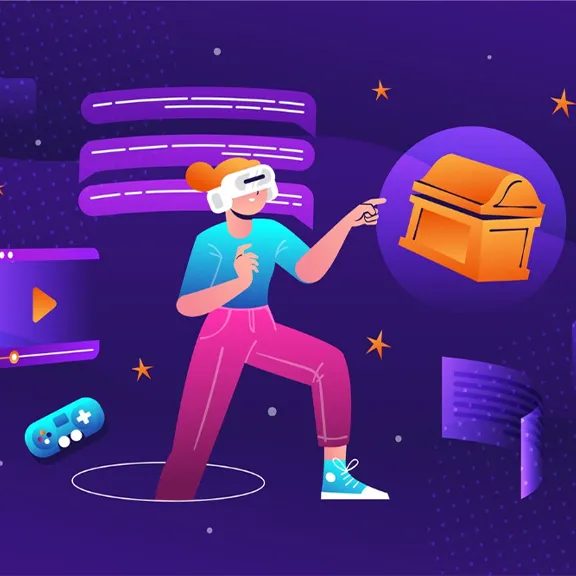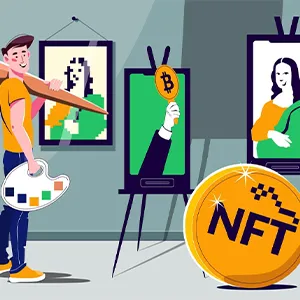NFT games development is becoming an industry that is growing and evolving day by day. NFT games are integrating with traditional game design and producing complex, innovative outcomes.
NFT games development is directly linked to the concept of digital ownership. Game developers start with the vision of creating a world where in-game assets have real-world value, and players can truly own, buy, sell, or trade their digital assets as if they were physical assets. The design phase includes the tokenization of in-game elements and the creation of other game mechanics. The challenge here lies in achieving a balance that provides economic incentives through NFTs while ensuring the game remains fun and engaging.
A company specializing in NFT game development should have the following features:
- Developers must choose an appropriate blockchain that supports NFTs. Factors such as network speed, transaction costs, community support, and environmental impact are critical in this decision.
- The creation of smart contracts is fundamental in NFT game development. These contracts must be secure, efficient, and capable of handling complex interactions such as craftsmanship and trade.
- Identifying items of token value is an important point. Not every game element needs to be an NFT. The uniqueness and utility of tokenized items can significantly influence their value.
- The integration of NFTs into game mechanics should be organic. The fun factor and playability of the game should not be compromised by its economic aspects.
- If a play-to-earn model is implemented, developers need to carry out various studies for the sustainability of this system and the game economy.
These points also respond to the question, “How will NFT develop in the gaming industry?“

What is an NFT in Game Development?
NFT game development is a complex process that requires careful planning and execution in all these points. The ultimate goal is to create an enjoyable and sustainable game that benefits from the advantages of blockchain technology without falling into its traps.
The typical workings of NFTs in game development are explained below:
Digital Ownership: NFTs can represent the ownership of digital items such as in-game assets. This includes collectibles, virtual land, skins, characters, weapons, and more.
Provable Scarcity: Developers can create NFTs in limited quantities to ensure rarity. The blockchain can verify the scarcity of an NFT, thereby enhancing its potential value.
Interoperability: Some NFTs can be used across different games and platforms, especially if the games are built on the same blockchain.
Permanence: Once an NFT is issued on a blockchain, it cannot be deleted or replicated. This permanence ensures that the digital asset will always exist as long as the blockchain does.
Authenticity and Provenance: The history of an NFT, including its creation and subsequent transactions, is recorded on the blockchain. This immutable record provides a clear trail of authenticity and provenance.
Trade and Monetization: Players can purchase, sell, or trade NFTs in marketplaces, often with cryptocurrency.
Royalties and Continuous Revenue: Smart contracts can be programmed so that the original creator of an NFT receives a percentage of the sale price each time the NFT is sold on a secondary market, providing a potential continuous revenue stream.


